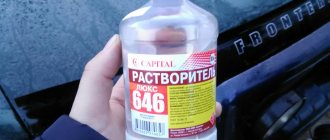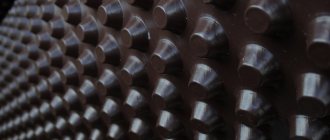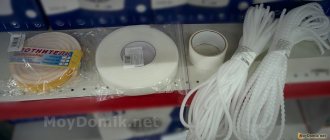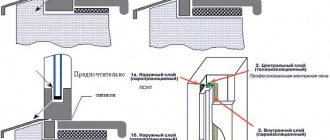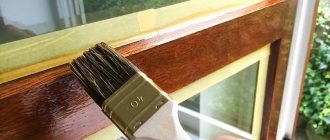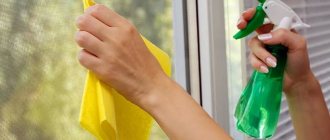Those who care about the environment, coziness and comfort of their home prefer windows with wooden frames rather than fashionable PVC.
But wooden windows require more attention - they need to be painted both when they are new and after some time, so that they last longer and have an attractive appearance.
Let's take a closer look at how and with what to properly paint wooden windows, the subtleties of the procedure, and types of materials.
Is it possible to paint wooden frames?
Wooden windows always need maintenance. And when they are new, and even more so when they have served for several years. Painting is a procedure that you cannot do without as owners of wooden frames. This must be done so that the frames :
- did not rot;
- did not crack;
- remained a decoration of the home longer.
A layer of paint protects the wood from damage, moisture, rotting, fungi and other external factors that can destroy any lumber.
Primer
In order for the paint to adhere well to the wooden frame, priming is performed using a brush, since it has the ability to rub the primer well into all the surface irregularities of the wooden profile. For priming, it is recommended to use a thixotropic (jelly-like) primer paint, which has the property of creating a perfectly flat surface. After the primer has dried (after 24 hours), you can begin painting the window.
Before painting, the outer part of a wooden window must be treated with an antiseptic impregnation for wood.
What types of material are suitable?
Let's try to figure out what is the best way to paint wooden windows. A wide variety of paints are produced to cover wooden frames :
- oil;
- acrylic;
- alkyd;
- nitrocellulose;
- polyurethane paints, as well as alkyd and water-soluble varnishes.
| Type of paint material | Characteristics and advantages | Flaws | Average price and manufacturers |
| Oil paint | Easy to apply, shiny, repels water and dirt. Densely covers the wooden surface, protects from moisture, insects, and parasites. | It takes a long time to dry, has a pungent odor, is fire hazardous, and fades over time. Service life 2-3 years | 150 rub. for 1 kg (Krafor) |
| Alkyd enamel | Frost and moisture resistant, does not fade in the sun. Good protection against insects and rot. Resistant to abrasion. It is highly decorative. | It has a pungent odor and is flammable. High price | 2600 rub. for 2.7 l (TIKKURILA), 500 rub. for 0.9 kg (Lakra) |
| Acrylic paint | It has good covering ability, is environmentally friendly, does not have a strong odor, repels moisture, is resistant to fading and temperature changes. The acrylic coating creates a thin protective film. Resistant to abrasion and dirt. | High price | from 1400 rub. for 2.7 l (BRITE PROFESSIONAL), 550 rub. for 0.5 l (MARSHALL EXPORT AQUA) |
| Polyurethane paint | It shines and has rich shades. Highly camouflages the wooden structural base, does not fade, protects against corrosion, fungi and parasites. | High price, toxic | about 2500 rub. for 2.25 l (TIKKURILA INDUSTRIAL TEMADUR) |
| Nitrocellulose paint (nitroenamel) | Easy to apply, dries quickly, forming a moisture-resistant coating. Can be applied using a spray gun. | Toxic, with a pungent odor, flammable. Has low weather resistance | from 350 rub. for 1.7 kg (KRAFOR) |
Varnishes are often used as a material to seal the painted surface of a wood frame. But very often they are used as an independent coating. The advantage of varnishes is that they do not cover the structure of the wood, but make it more expressive, while at the same time reliably protecting it from negative influences.
Paints and varnishes can be either colorless or with tinting properties. For the external coating of windows, alkyd and water-soluble varnishes are used:
Alkyd varnish adheres to any surface, forming a durable coating that is resistant to precipitation, abrasion, and fading.
Gives windows an attractive appearance, but is fire hazardous and toxic.- Water-soluble varnish protects wood from moisture and dirt by forming a thin film. Non-toxic, non-flammable, but has a low abrasion rate. It is better to use in conjunction with protective impregnation.
There is a large selection of impregnations on the market. They also protect the wood from rotting, moisture, precipitation, and insects. Popular impregnations from the following manufacturers :
- Pinotex;
- Tikkurila;
- Aquatex.
From all this we can conclude that high-quality paint should have the following properties :
- be resistant to precipitation;
- have high-quality coverage;
- protect against mold;
- be resistant to burnout;
- repel dirt;
- dry quickly;
- do not have a pungent odor.
How to determine the quantity?
The amount of paint needed to cover a wooden window depends on the type of paint material. To make the calculation more accurate, you need to know two things :
- window or frame area;
- consumption rates of the type of paint used.
The area of the window or frame is measured. The resulting figure should be multiplied by the standard consumption of material (per 1 sq.m.) - this will give the amount of paint that will be needed to cover the window frame in one layer. The quality of the wooden surface also matters.
If the surface is porous and rough, then more paint will be required and vice versa - for a smooth surface the consumption will be less.
It should also be taken into account that most surfaces should be painted in several layers. In this case, paint consumption will increase.
Stages of work
To achieve an excellent decorative effect and avoid common problems such as blistering and blistering of paint, it is necessary to carry out the work at the correct time. It is best to paint frames on a warm, but not too sunny day, as ultraviolet radiation has a negative effect on the paint pigment. The chosen day should be dry. It is best if there is no rain on the eve of work.
Work must be carried out in warm weather at a temperature not lower than +5 degrees. However, be sure to take into account the paint properties that are written on the packaging. The manufacturer always indicates how to properly work with the composition.
Removing old coating
To apply a new coat of paint to the frames, you must first remove the old one. To do this you will need sandpaper, a spatula, a scraper or a knife. If the paint “sits” very firmly and cannot be removed with improvised means, you can connect a sanding machine to the work.
The workflow might look like this:
- Remove the old window frames from their hinges . It is most convenient to place them on a horizontal surface, having previously spread a film or any other covering. It is advisable to carry out work outdoors outside the premises.
- Remove the glass . In order not to stain the glass, it is easiest to remove them from the frames. If this is not possible, cover the frames with newspapers or film, securing the corners with tape. Make sure that the coating fits tightly to the surface and does not allow paint to flow under it. Otherwise, you will have to wash the windows as well.
- Remove old nails, latches, latches and handles . Frames must be “cleaned” of fittings. Try to remove even the smallest details, as they can greatly interfere in the future.
- Remove paint . Use previously prepared tools for this.
If you don't have time to remove paint manually, you can use a special remover for the job. However, such a solvent will have to be applied repeatedly, and all work must be done in a respirator and safety glasses.
Elimination of defects
After removing the old layer of paint, defects may appear on the frame. They need to be eliminated. The method is selected depending on the degree of damage. Some problems can be fixed only with sandpaper, while others will require more comprehensive techniques.
If traces of rot or areas damaged by insects are found on the frame, these parts are removed and replaced with new ones.
Putty and surface leveling
Puttying the frames is another mandatory step, which allows the paint to go on much smoother and of better quality. This procedure is aimed at filling cracks and voids on the surface of the wood.
The putty is applied to a surface that has been previously cleaned of dust and debris. If there are wet marks on the wood, they must be dried with a hair dryer. If you don't have a hairdryer, you'll have to dry it in the sun.
After this, an antiseptic is applied to the dry surface. It will protect the wood from rot, mold and fungi. After application, the antiseptic should be absorbed and dry well. Next you can apply putty. It is most convenient to work with the mass using a rubber spatula.
Apply the mixture as evenly as possible. In places where the damage to the wood is deep, apply putty in several layers. However, before applying a new coat, let the old one dry. This takes 3-4 hours.
If you decide to paint the frames with oil paint, use oil putty under it. Acrylic compounds are perfect for all other types of coating.
If the frames were made of softwood and have a short service life, after removing the old layer of paint, resin may appear on their surface. Such areas need to be disposed of urgently. Otherwise, the paint will not adhere to the resin, and your work will go down the drain.
You can remove resin in the following way:
- Take a sharp knife and remove the area where the resin is coming out.
- Treat the resulting depression with an antiseptic.
- Apply putty in several layers.
Primer of window frames
After the putty has dried, it is necessary to apply a layer of primer to the frames. This will create additional protection for the wood from the negative influences of the external environment, and will also improve the adhesion of the paint to the base.
It is best to take a primer with a degreasing function. This will save you from unnecessary work.
The primer must be applied in accordance with the instructions, which are necessarily contained on any packaging.
Applying paint
Applying paint is the most important and crucial moment. Before starting work, thoroughly stir the composition.
It is also important to follow the following rules:
- To achieve the desired effect, apply paint in 2-3 layers. This way you can cover existing imperfections and achieve the necessary color saturation.
- The paint for the first layer should not be too thick. If necessary, the composition can be diluted with a suitable solvent. Paint that is too thick may go on unevenly and will not cover hard-to-reach areas.
- Start by painting small parts. Be sure to pay attention to corners and hard-to-reach places, and internal parts of the structure.
- Espagnols, handles and other fittings must be painted separately and returned to their place only after drying.
- Apply a second coat of paint only after the first layer has completely dried. For repeated application, the consistency of the composition should be denser and thicker. This way you can achieve uniform and dense coverage of all defects.
- As you work, apply the paint in an upward motion. This will avoid the formation of smudges.
Expert opinion
Koklyaev Vladimir Stepanovich
Experienced plumber with 12 years of experience
The color of the paint in the can may differ by several shades from the result obtained during the drying process. Be sure to take this point into account when choosing a suitable color scheme.
All of these steps are important links in the process of painting window frames.
Devices and tools for work
To paint wooden window frames you will need the following materials and tools :
several brushes of different sizes;- spatula, scraper;
- masking adhesive tape;
- solvent (white spirit);
- drying oil;
- primer;
- putty and primer;
- glazing beads;
- screwdriver, hammer, chisel, nails;
- sandpaper of different grain sizes;
- dye.
In addition to materials and tools, protective equipment may be useful :
- gloves;
- glasses;
- headdress;
- mask or respirator (if the paint is toxic).
How to do it right: step-by-step instructions
It is best to paint windows in the warm season. The right time is at the end of spring, when the weather is dry and warm. It is also possible at the end of summer - when there is no longer any heat, but the autumn rains have not yet arrived.
New wooden frames are easier to paint than old ones - they do not need to be cleaned of old paint. But this does not mean that they do not need to be prepared for painting. Paint should be applied to new frames before glazing in order to thoroughly paint all areas, as unprotected areas will begin to corrode.
Preparatory stage
The wooden frame is inspected and any defects found are eliminated. If necessary, old paint and rotten areas are removed. Masking tape is applied to the glass around the perimeter of the frame to protect it from primer and paint. To protect against mold and parasites, go over the wooden frame with a brush moistened with an antiseptic compound.
Putty and primer
Chips and cracks on the frame should be filled with putty . After the putty has dried, the repaired and repaired areas should be “sanded” with fine sandpaper.
Next, the entire wooden surface of the frame is covered with primer enamel - this will prevent the paint from being absorbed into the wood, and it will lie more evenly.
Application of material
When the window is prepared, the painting process begins.
The paint should be thoroughly mixed before use. A new wooden window requires several coats of paint. For the first layer, the paint should not be too thick. If it is thicker than necessary, then it is made more liquid by adding a suitable solvent and stirring well.
The entire surface of the frame is covered with the first thin layer of paint. This is necessary so that there is not a single unpainted area left. First, small parts, joints of frame parts, and internal parts of the structure are painted. The ends and the box are painted at the end.
Before applying the second layer of material, you should make sure that the first one is completely dry . For the second layer, the paint should be denser in consistency to prevent smudges. The paint should be applied from bottom to top - this will also help avoid smudges.
If necessary, apply a third coat of coating.
Painting wooden euro windows
You should start painting wooden Euro-windows from the outside of the window frame with a small brush (no more than 4 cm wide), carefully painting hard-to-reach places. The paint is applied along the wooden fibers with broad strokes, the corners are painted perpendicular to the surface with pointed strokes of the brush. Next, they begin painting the lower and upper horizontal bars, and then the vertical bars of the frame. Having fully opened the window sash, the hinges and window frame are painted. If you have a double frame, you should paint the inside first, let it dry, and then paint the outside of the window frame. Window slopes are covered with one layer of paint.
Next we start painting the frame itself. It is worth painting the window frame, starting with small parts. It is very necessary to paint the joints of the boards very carefully, since the cuts are the most vulnerable internal parts of a wooden window structure. The frame and ends are painted after the window frame is completely dry. When the painted wooden window dries, apply a second coat of paint. Painting the wooden window sill is the last thing to start.
When the paint has completely dried, replace the removed and painted fittings. If the sockets for the screws securing the hinges become loose, you need to plan out the plugs from a piece of wood and lubricate them with glue (PVA, epoxy, carpentry), then hammer them into the sockets and secure them with screws.
Technology for different types
Each type of material requires a special approach and its own technology. Let's discuss each in detail separately.
Regular frames
It is easier and safer to paint wooden windows by removing the frames from their hinges and placing them horizontally on a flat surface.
If this is not possible, then after applying the paint (while it dries), the doors must be opened and closed several times to avoid sticking of the recesses and protrusions due to paint getting into the grooves. When the paint begins to dry, remove the masking tape.
With double glazing
Wooden windows with double-glazed windows also require renewal of the protective layer several years after operation. For such windows, water-dispersed paint or alkyd enamel are suitable. Wood varnish, both clear and tinted, is also often used.
It is advisable to remove the frame from its hinges . The surface of the frame is cleaned using sandpaper or a grinding device. The glass is protected from paint or varnish with masking tape, and the fittings are removed.
The cleaned surface is first primed with a material similar in chemical composition to the paint coating. After the coating has dried, the fittings are installed in place.
Painting is done with brushes with natural bristles or a roller. The paintwork is selected a tone darker than the wooden frame. The coating is made in 3 layers. The 1st layer is very thin so that the material is absorbed into the wood.
Old
If the wooden frames are worn out, then be sure to remove the old coating.
Applying new paint to old paint that is cracked and blistered will be a waste of time and money. The ideal option would be to completely remove old paint from the wooden surface . This can be done using a special solvent and a scraper. Next, the entire surface of the frame is cleaned with a spatula and then with sandpaper. Finally, the frame is treated with white spirit and then washed with water.
Rotten places on the frame are removed, all irregularities and cracks are puttied. After the putty areas have completely dried, the surfaces are leveled and polished with fine sandpaper. If necessary, repeat the procedure.
Restored frames are coated with primer . Now there are primers with an antiseptic that will protect the wood from parasites and mold.
Damaged wooden glazing beads are replaced with new ones, which are first sanded, primed and only then the glass is secured to the frame with nails.
Before starting painting work, the fittings are inspected and, if necessary, repaired. Masking tape is applied to the glass to protect it from paint.
Packing double-glazed windows with masking tape
To prevent the glass unit from getting dirty when painting a wooden window, it is recommended to wrap it with masking tape. To do this, masking tape is glued to the edge of the window glass, leaving a gap of 2 millimeters between the frame and the self-adhesive tape. Thanks to this technique, the gap between the glass unit and the frame will be covered with paint, which will protect it in the future from water draining from the glass unit.
Possible difficulties
Painting wooden windows is a job that does not require special knowledge and skills. It’s not difficult to do this yourself, following certain rules and steps. Painting your windows yourself can save you money, especially if the windows are in good condition.
But if wooden windows are very old and require restoration or you don’t have time for this, then in this case you can turn to specialists. They will do this work efficiently and professionally, using modern materials.
Characteristics of paints
Some people think that the cost of paint is the main indicator of its quality. This is only partly true. In fact, high cost is often only a component of a famous brand. And the composition of the paint is more important. And first of all, its foundation.
Polyurethane varieties
The base of the composition is polyol. Due to the polyhydric nature of organic alcohols, an excellent polymer is obtained, which is given many useful properties. For this purpose, hardeners and other additives are introduced into the general composition.
Paint for wooden windows Source ecwid.com
Advantages and disadvantages
Painted wooden window frames have a number of advantages over unpainted ones :
- the paintwork protects against external factors (rain, parasites, mold);
- extends the service life of wood;
- Thanks to the variety of shades of paints and varnishes, it is possible to change the color of wooden windows, both indoors and outdoors.
The disadvantages of an unpainted wooden window are obvious: unpainted wood will quickly lose its attractive appearance, crack, begin to rot and deteriorate.
How to choose paint for painting windows
How to paint wooden windows is a question that must be approached carefully and responsibly. Choosing the right material is not the last thing in the entire process of updating frames, because good paint will not only change the appearance of the window, but will also increase its service life.
When choosing which paint is best to paint a wooden window, look at moisture-resistant materials - this will protect the frames from the penetration of unnecessary water and protect the wood from cracking. The paint must be elastic in order to protect the frames from deformation and shrinkage.
The best option is alkyd paint or acrylic. As a rule, these paints are good because they do not turn yellow and have no odor. Do not be alarmed that the paint is water-based (diluted with water), after drying it is very durable and will last for many years. When answering the question of how to paint the outside of window frames, choose light colors, which are able to reflect the sun's rays and thereby extend the life of the frames.
When starting to repair and paint windows, some choose varnish as a coating. How to paint old windows with varnish? Applying varnish is no different from applying paint. It is better to choose acrylic varnish, which is moisture-repellent and environmentally friendly (wave-based), in addition, it can beneficially change the appearance of the windows.
Even if you decide to paint the windows with expensive shiplap varnish, it will crack in a couple of years. Therefore this is not the best option.
How much does painting cost - average prices in the Russian Federation
The cost of professional services for painting wooden windows depends on the scale of the work. Construction companies provide a variety of services : from cosmetic repairs of wooden windows to their complete restoration:
- wooden window with one sash - from 3,000 to 7,000 rubles;
- window with two sashes - from 4,000 to 8,000 rubles;
- balcony block - from 5,000 to 8,000 rubles.
The total price of the services provided may also include the cost of delivering the specialist to the site. There is also a minimum order depending on the territorial location of the customer.
Preparing to paint wooden windows
Before painting wooden windows, do not forget to protect the glass unit with special masking tape, seal all cracks, remove protruding window fittings and apply a new layer of sealant. The old layer of paint is removed by sanding the wood, paying special attention to the joints and gluing areas (more paint usually accumulates in these places), and then clean the surface from dust. This should be done delicately and carefully using a stiff brush.
It is not recommended to remove paint with a knife, since such exposure may leave dents and chips on the surface of the wood. After the layer of old paint is removed, it is necessary to check the wood for damage - wormholes, rotten formations, and so on.
Also, before starting painting work, it is necessary to eliminate common defects in the form of broken locking mechanisms and loose fastening parts of wooden windows.

